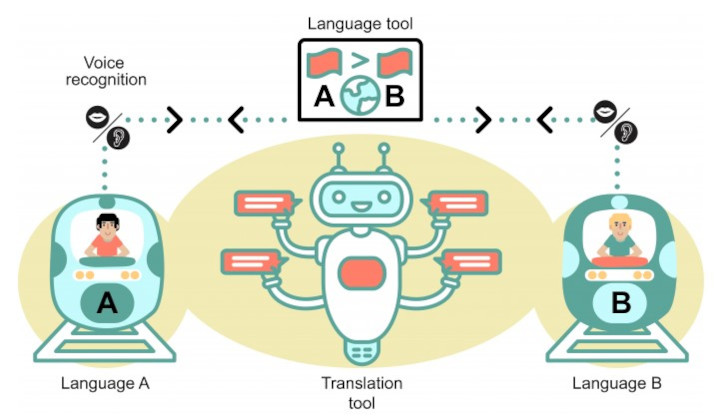In autumn 2020, RFI launched the second phase of the pilot project ViTa, consisting of the laboratory and field tests of a translation tool prototype to support the communication between signallers and train drivers, in order to implement EU Regulation 2019/554 on the certification of train drivers.
In collaboration with UIC and RailNet Europe associations, RFI and OBB Infra, together with the railway undertakings Railcargo Austria and DB cargo, tested the prototype - known as “Translate4Rail” - on the cross-border section between Villach and Tarvisio (ViTa).

A first laboratory trial was carried out in October, with the installation of the prototype on a tablet, through which the reliability of tool ‘s functions such as, the speech recognition, the transcription of the communication in the original language, the association with a set of predefined messages and the translation into the target language, was assessed.
For the field tests’ purposes, the tablet was connected to the signaller’s console and a call with the train driver was simulated via the GSM-R system. In this way, the message sent by the signaller in Italian was received in the driver's cabin directly in Austrian and vice versa.
Thanks to the cooperation between RFI, OBB Infra and the railway companies participating in the project, numerous trials were carried out at the Rome Tuscolana Nucleo Operativo Centrale GSM-R (NOC) (Central Operational Unit), which allowed to make further improvements and to increase the reliability and the performance of the translation prototype.
In June 2021, from the laboratory environment we moved on the realization of two field tests experimenting with the translation of on ground – on board communications and vice versa by:
- a train running from Tarvisio Bosco Verde station to Pontebba and back;
- a locomotive parked in the Tarvisio Bosco Verde station.
Thanks to the technical knowledge and experience of the RFI team involved in the project, various scenarios in ordinary, degraded and emergency operation were simulated. They allowed to prove the reliability of the tool and, at the same time, to identify further areas for improvement to be developed in view of the project completion by the end of the year.
Stay tuned and hop on to learn about our project! Enjoy!